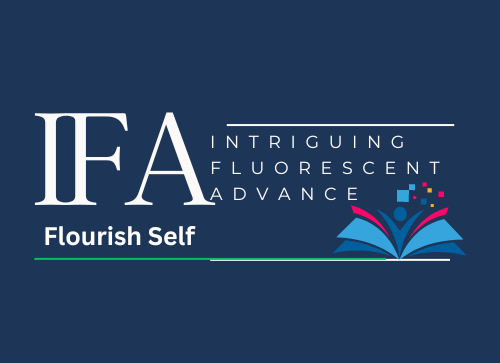
Enhancing Knowledge Retention with Effective Visual Aids
The use of visual aids in the learning process has proven to have a significant impact on enhancing students’ knowledge retention. Incorporating educational visuals, interactive visuals, and multimedia learning tools can greatly improve the effectiveness of teaching and learning. Visual aids such as teaching tools, learning resources, and instructional visuals provide valuable support to educators, making the learning experience more engaging and interesting for students.
A study conducted in District Dera Ghazi Khan revealed that visual aids, including pictures, animation videos, projectors, and films, can act as powerful motivators, capturing students’ attention and increasing their engagement when reading literary texts. The research collected data from both public and private educational institutions, and the majority of participants agreed that visual aids positively contribute to the effectiveness of learning.
By incorporating visual aids into the learning process, teachers can effectively deliver information and create an environment that promotes active participation from students. Visual aids provide visual learning materials that enhance comprehension, memory retention, critical thinking, and creativity. They simplify complex information, stimulate higher-order thinking skills, and assist in internalizing knowledge.
Key Takeaways:
- Visual aids enhance knowledge retention and engagement in learning.
- Educational visuals, teaching tools, and learning resources support effective teaching and learning.
- Visual aids simplify complex information and improve comprehension.
- They promote critical thinking, creativity, and memory retention.
- Visual aids assist in internalizing and applying knowledge.
The Benefits of Using Visual Aids in Learning
Visual aids offer numerous benefits in the learning process. They capture learners’ attention and create a more enjoyable learning experience. Images, videos, and infographics attract and maintain learners’ interest, leading to increased engagement and motivation.
Visuals also simplify complex information, making it more accessible and easier to understand. They enhance comprehension by presenting information in a visually appealing and organized manner. Visual aids can break down abstract concepts and intricate data into visual representations that learners can easily grasp.
Furthermore, visual aids play a crucial role in enhancing memory retention. By incorporating visual elements such as images, diagrams, and interactive components, learners can create mental associations and reinforce their understanding through memory retention. Visuals provide visual cues that assist in recalling information during assessments and real-world applications.
Visual aids also promote critical thinking and creativity. Analyzing and interpreting visual stimuli requires learners to think critically, analyze information, and draw connections. The use of visual aids, such as infographics and data visualizations, fosters critical thinking skills and encourages learners to approach problems from different perspectives. Additionally, visual aids stimulate creativity by allowing learners to express their ideas visually.
Visual aids enhance engagement, comprehension, memory retention, critical thinking, and creativity in the learning process.
Types of Visuals in the Learning Process
Visuals play a crucial role in the learning process, helping to facilitate understanding and engagement. Several types of visuals are commonly used to convey information effectively and make learning more interactive and memorable.
Images and Illustrations
Images and illustrations are powerful tools for visual storytelling and conveying complex ideas. They can capture learners’ attention and stimulate their imagination, making learning more engaging and immersive. By using relevant and high-quality images, educators can enhance comprehension and create a visually appealing learning environment.
Graphs and Charts
Graphs and charts are effective ways to represent numerical data and relationships visually. They simplify complex information and enable learners to identify patterns and trends easily. Whether it’s analyzing scientific data or understanding market trends, graphs and charts provide a visual framework that enhances comprehension and critical thinking.
Diagrams and Flowcharts
Diagrams and flowcharts are excellent tools for visualizing processes, hierarchies, and relationships. They simplify complex concepts by breaking them down into easy-to-understand visual representations. Learners can follow the flow of information, understand relationships between different elements, and grasp the big picture.
Infographics
Infographics combine text, images, and visual elements to present information in a concise and engaging manner. They help learners absorb information more quickly by organizing content into easily digestible chunks. Infographics simplify complex concepts, highlight key points, and make learning more enjoyable and memorable.
Videos and Animations
Videos and animations provide dynamic storytelling and bring concepts to life. They engage learners visually and audibly, making learning more interactive and immersive. Whether it’s a science experiment, historical event, or storytelling, videos and animations create a multisensory learning experience that enhances comprehension and retention.
Virtual and Augmented Reality
Virtual and augmented reality technologies offer interactive and experiential learning environments. They provide learners with simulated experiences, allowing them to explore and interact with virtual objects in a controlled setting. Virtual and augmented reality stimulate curiosity, enhance engagement, and provide unique opportunities for hands-on learning.
By incorporating these various types of visual aids into the learning process, educators can create a dynamic and engaging learning environment that fosters understanding, critical thinking, and creativity.
Visual Aids for Memory Retention
When it comes to learning, memory retention is crucial. Fortunately, visual aids provide a powerful solution to enhance this aspect of the learning process. Research has shown that incorporating visual cues significantly improves memory recall. By leveraging visual elements such as images, mind maps, and mnemonic devices, learners can create mental associations that facilitate the retrieval of information.
Visual aids also contribute to repetition, one of the key factors in long-term memory retention. As learners revisit visual materials, they reinforce essential concepts and deepen their understanding. This repetition strengthens neural connections, making it easier for learners to recall information when needed.
The Impact of Visual Cues
Visual cues have a strong impact on memory recall, as they stimulate the brain’s ability to retain information.
Visual aids provide learners with visual cues that trigger memory retrieval. These cues act as mental reminders, allowing learners to easily access stored information. By incorporating visual cues into the learning process, educators empower learners to connect new knowledge to previously acquired information, forming a network of related concepts. This network strengthens memory retention and facilitates the overall learning experience.
The Power of Mental Associations
Mental associations play a vital role in memory retention. When learners associate visual aids with specific concepts or ideas, they create meaningful connections in their minds. These mental associations enhance the encoding and storage of information, making it easier to retrieve later on. By using visual aids to facilitate the creation of mental associations, educators can improve learning outcomes and deepen learners’ understanding of the subject matter.
Reinforcing Key Concepts
Visual aids serve as effective tools to support long-term memory retention by reinforcing key concepts.
Visual aids provide learners with repeated exposure to important information. As learners engage with visual materials, they reinforce their understanding of key concepts. This repetition helps solidify neural connections, making the information more readily accessible in the future. By utilizing visual aids strategically, educators can ensure that crucial information is effectively encoded into long-term memory.
Visual Aids for Simplifying Complex Information
Visual aids are invaluable tools for simplifying complex information, enabling learners to grasp abstract concepts more easily. By utilizing graphs, charts, and diagrams, educators can break down intricate ideas into manageable components, facilitating understanding and comprehension. These visual representations provide a visual structure that helps learners visualize and analyze the relationships between different pieces of information.
Color coding, icons, and spatial organization further enhance the clarity of complex information. By assigning colors or icons to specific elements, learners can quickly identify patterns and connections, making the information more accessible and memorable. Additionally, spatial organization helps learners navigate through the information, providing a clear and logical flow.
| Visual Aid Type | Function |
|---|---|
| Graphs and Charts | Represent numerical data and relationships |
| Diagrams and Flowcharts | Visualize processes, hierarchies, and relationships |
| Color Coding and Icons | Enhance understanding and identification of key information |
| Spatial Organization | Provide a structured and logical layout for complex information |
A well-designed visual aid simplifies comprehension, breaking down complex information into easily digestible components. By leveraging the power of graphs, charts, diagrams, color coding, and spatial organization, educators can make even the most complex topics accessible and engaging for learners.
Visual Aids for Critical Thinking and Creativity
Visual aids play a pivotal role in fostering critical thinking and creativity during the learning process. By presenting learners with visual stimuli, such as infographics and data visualizations, they are encouraged to analyze and interpret the information, effectively sharpening their critical thinking skills. Through making connections and drawing conclusions, learners engage in higher-order thinking, enhancing their ability to evaluate and synthesize information.
Moreover, visual aids stimulate creativity by inspiring learners to think imaginatively and visually express their ideas. Students can explore various perspectives and develop their own unique interpretations by interacting with engaging visual content. This process encourages them to push boundaries, challenge preconceptions, and generate innovative solutions.
“Visual aids serve as catalysts, fueling critical thinking and nurturing the creative potential within each learner.”
Visual aids also provide valuable opportunities for learners to engage in problem-solving activities, analysis, and synthesis. By navigating through complex visual representations, such as graphs or interactive infographics, learners are prompted to break down information and extract meaningful insights. They develop the ability to identify patterns, draw connections, and apply their analytical skills in real-world contexts.
To illustrate the impact of visual aids on critical thinking and creativity, consider the following examples:
| Visual Aid Type | Impact on Critical Thinking and Creativity |
|---|---|
| Infographics | Promote analytical thinking by requiring learners to interpret data, identify trends, and draw conclusions. Encourage creativity by allowing learners to visually present complex information in a concise and engaging manner. |
| Data Visualizations | Facilitate critical thinking by enabling learners to analyze and interpret complex datasets. Encourage creativity by allowing learners to explore patterns and relationships within the data, leading to new insights and innovative solutions. |
| Interactive Visuals | Engage learners in problem-solving activities, where they can interact with visual content to explore different scenarios and develop strategic thinking. Encourage creativity by providing opportunities for learners to experiment with different outcomes and solutions. |
Through these examples, it becomes evident that visual aids empower learners to think critically, challenge assumptions, and nurture their innate creativity. By incorporating visual aids into the learning environment, educators can create an atmosphere that stimulates intellectual curiosity and supports the development of well-rounded individuals ready to face the challenges of the future.
Visual Aids for Knowledge Internalization
Visual aids can be powerful tools in facilitating knowledge internalization, particularly in the context of Lean manufacturing and Kaizen. When implementing these operational strategies, companies can leverage visual media and exercises to assist employees in understanding and applying key concepts effectively.
One effective visual aid is the use of posters and visual guides. These resources provide a visual representation of important principles and help reinforce employees’ understanding. By using clear and concise visuals, posters and guides serve as constant reminders, aiding in memory retention and reinforcing essential information.
Activities and games are another valuable means of engaging employees in the learning process and promoting knowledge retention. These interactive methods provide opportunities for employees to actively apply and reinforce what they have learned. By incorporating elements such as quizzes, puzzles, and team challenges, activities and games create a dynamic and participatory learning environment that enhances memory retention and promotes knowledge reinforcement in a fun and engaging way.
By utilizing visual aids, companies can ensure that knowledge is not only acquired but also internalized and applied in the workplace. Visuals help employees better understand Lean manufacturing principles and Kaizen concepts, allowing them to make informed decisions and contribute to continuous improvement initiatives. Through the use of posters, visual guides, activities, and games, visual aids play a crucial role in reinforcing knowledge, fostering a culture of learning, and promoting the effective implementation of Lean manufacturing and Kaizen strategies.
Conclusion
Visual aids are powerful tools for learning, enhancing knowledge retention, and creating effective teaching environments. By incorporating various types of visual aids, such as images, graphs, diagrams, infographics, videos, and virtual reality, educators and organizations can engage learners and improve the effectiveness of their teaching methods.
Visual aids capture learners’ attention and make the learning experience more engaging. They simplify complex information, making it easier for learners to understand and comprehend. By creating mental associations and facilitating repetition, visual aids improve memory retention, ensuring that learners can recall and apply the knowledge they have gained.
Furthermore, visual aids promote critical thinking and creativity by requiring learners to analyze and interpret visual stimuli. They foster higher-order thinking skills and encourage learners to think imaginatively, enhancing their problem-solving abilities.
Overall, visual aids are essential teaching tools that facilitate knowledge internalization and application. By harnessing the power of visual aids, educators and organizations can unlock the potential of learners and create immersive learning experiences that enhance knowledge retention and comprehension.
Frequently Asked Questions
What are visual aids for learning?
Visual aids for learning are resources and tools, such as images, videos, graphs, and diagrams, that enhance the teaching and learning experience by capturing learners’ attention, simplifying complex information, and promoting engagement and comprehension.
How do visual aids enhance knowledge retention?
Visual aids enhance knowledge retention by creating mental associations, facilitating repetition, and providing visual cues that improve memory recall. Visual elements, such as images, mind maps, and mnemonic devices, help learners internalize information and reinforce key concepts.
What types of visuals are used in the learning process?
Various types of visuals are used in the learning process, including images and illustrations to convey complex ideas, graphs and charts to represent numerical data, diagrams and flowcharts to visualize processes, infographics to present information concisely, videos and animations for dynamic storytelling, and virtual and augmented reality for interactive and immersive learning experiences.
How do visual aids simplify complex information?
Visual aids simplify complex information by breaking it down into more manageable components. Graphs, charts, and diagrams help learners visualize abstract concepts, while color coding, icons, and spatial organization assist in understanding relationships between different pieces of information.
How do visual aids promote critical thinking and creativity?
Visual aids promote critical thinking and creativity by requiring learners to analyze and interpret visual stimuli, such as infographics and data visualizations. They stimulate higher-order thinking skills, foster problem-solving abilities, and encourage learners to think imaginatively and express their ideas visually.
How do visual aids support knowledge internalization?
Visual aids support knowledge internalization by reinforcing key concepts and principles. Posters and visual guides can be used to reinforce learning in the workplace, while activities and games engage employees in the learning process and provide opportunities for knowledge reinforcement.
What are the benefits of using visual aids in learning?
Using visual aids in learning enhances engagement, comprehension, memory retention, critical thinking, and creativity. Visual aids capture learners’ attention, simplify complex information, promote active participation, and create more enjoyable learning experiences.
What are visual aids for learning?
Visual aids for learning are resources and tools, such as images, videos, graphs, and diagrams, that enhance the teaching and learning experience by capturing learners’ attention, simplifying complex information, and promoting engagement and comprehension.

















